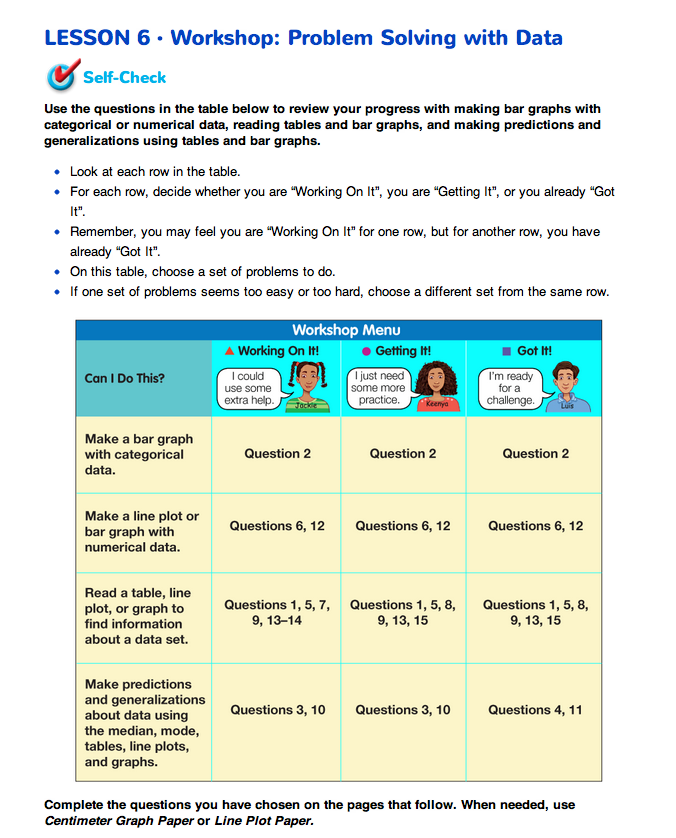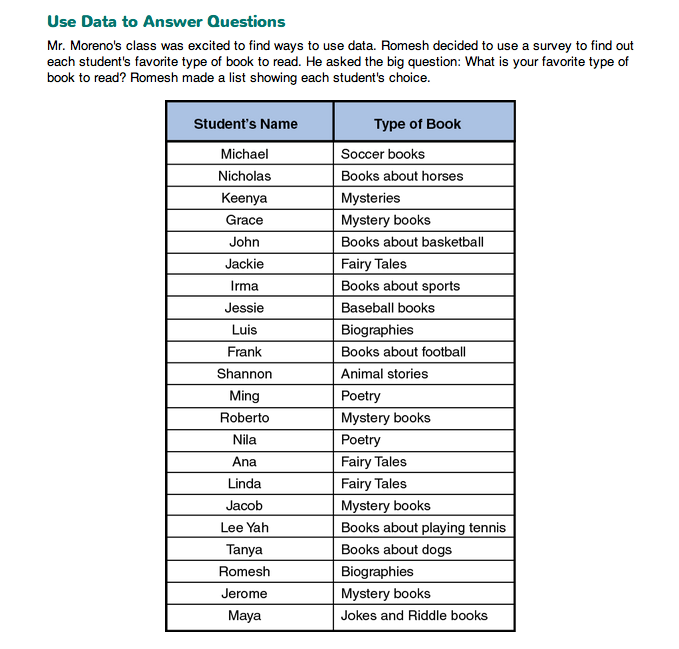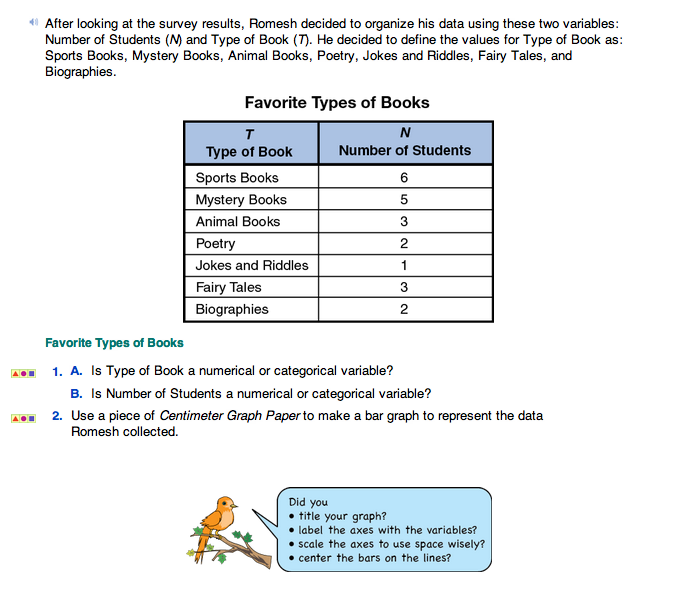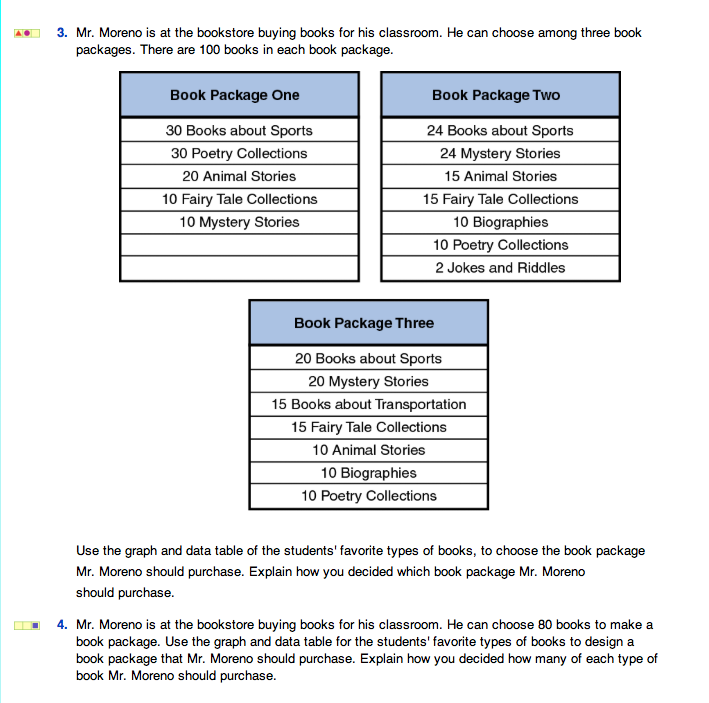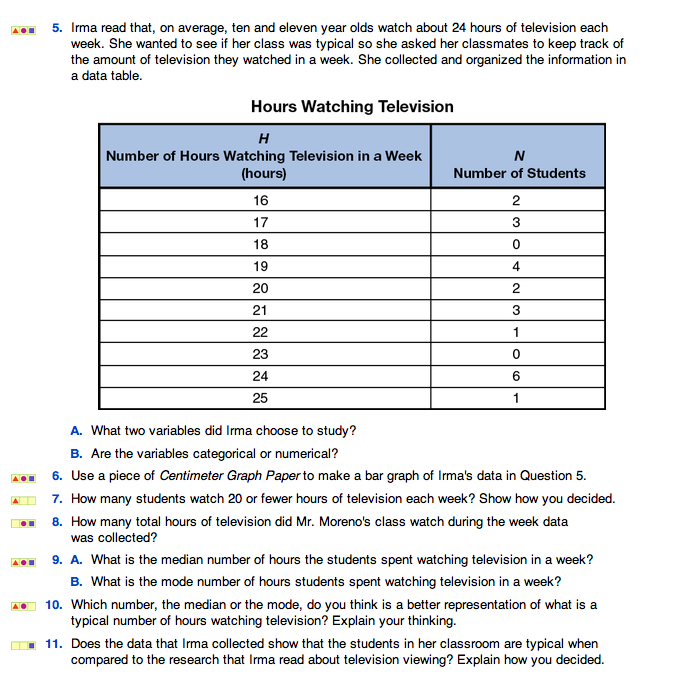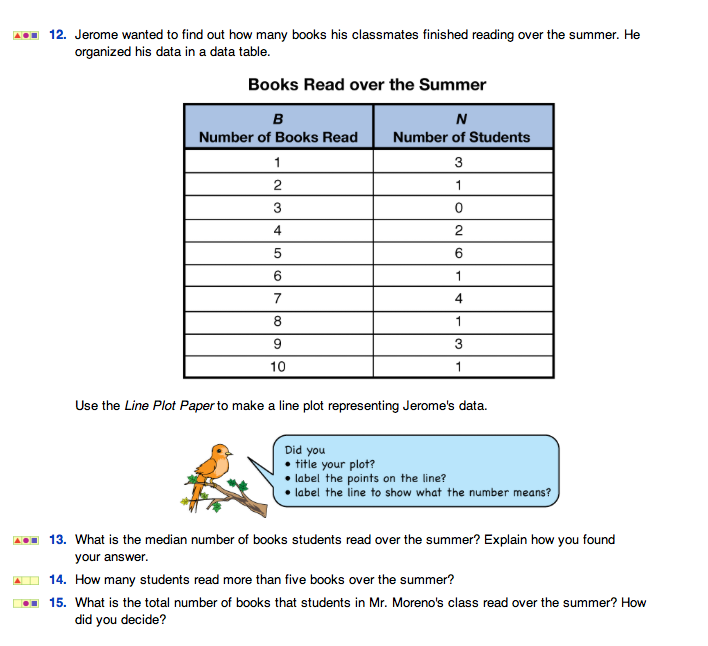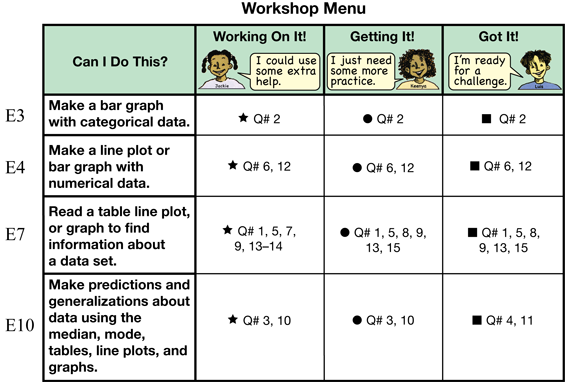Workshop: Problem Solving with Data
Est. Class Sessions: 1–2Developing the Lesson
Choose Targeted Practice. Ask students to refer to the Workshop Menu on the Workshop: Problem Solving with Data page from the Student Guide. Help students assess their confidence with making bar graphs; using categorical and numerical data; making line plots; reading a table, line plot, or graph to find information about a data set; and making predictions and generalizations about a data set using the median, mode, tables, line plots, and graphs by asking them to reflect on previous work. Have students think about the “Can I Do This?” questions in the left-hand column of the Workshop Menu. See Figure 1 for the expectations related to each question. Ask students to review their work to decide which problems to choose from the following groups:
- Students who are “working on it” and need some extra help should circle the problem set marked with a triangle (
 ). These problems provide scaffolded support for developing the essential underlying concepts as well as some opportunities for practice.
). These problems provide scaffolded support for developing the essential underlying concepts as well as some opportunities for practice. - Students who are “getting it” and just need more practice should circle the problem set marked with a circle (
 ). These problems mainly provide opportunities to practice with some concept reinforcement and some opportunities for extension.
). These problems mainly provide opportunities to practice with some concept reinforcement and some opportunities for extension. - Students who have “got it” and are ready for a challenge or extension should circle problems marked with a square (
 ). These problems provide some practice and then move into opportunities for extension.
). These problems provide some practice and then move into opportunities for extension.
Check students' choices to see how well they match your own assessment of their progress on the related Expectations. Help students make selections that will provide the kind of practice they need. Figure 1 shows the Expectations for this Workshop and provides questions to help students decide what practice they need.
Once students select the questions to complete in the Workshop, match groups of students who have chosen similar sets of problems from the menu. Have students work together with a partner or in a small group to solve the problems they chose. The problems for this workshop are in the Student Guide on the Workshop: Problem Solving with Data pages.
Before students begin work, direct them to the Math Practices page in the Student Guide Reference section.
Ask students to review the first, second, fifth. and sixth Math Practices Expectations with a partner before asking:
Share Workshop Experience. After students have had time to work on their selected problems, choose a few problems from the Workshop to discuss as a class. You might choose these problems to represent common areas of difficulty for students or areas where students made significant progress over the course of the unit. You may also choose to discuss problems that all or most students would have solved.














